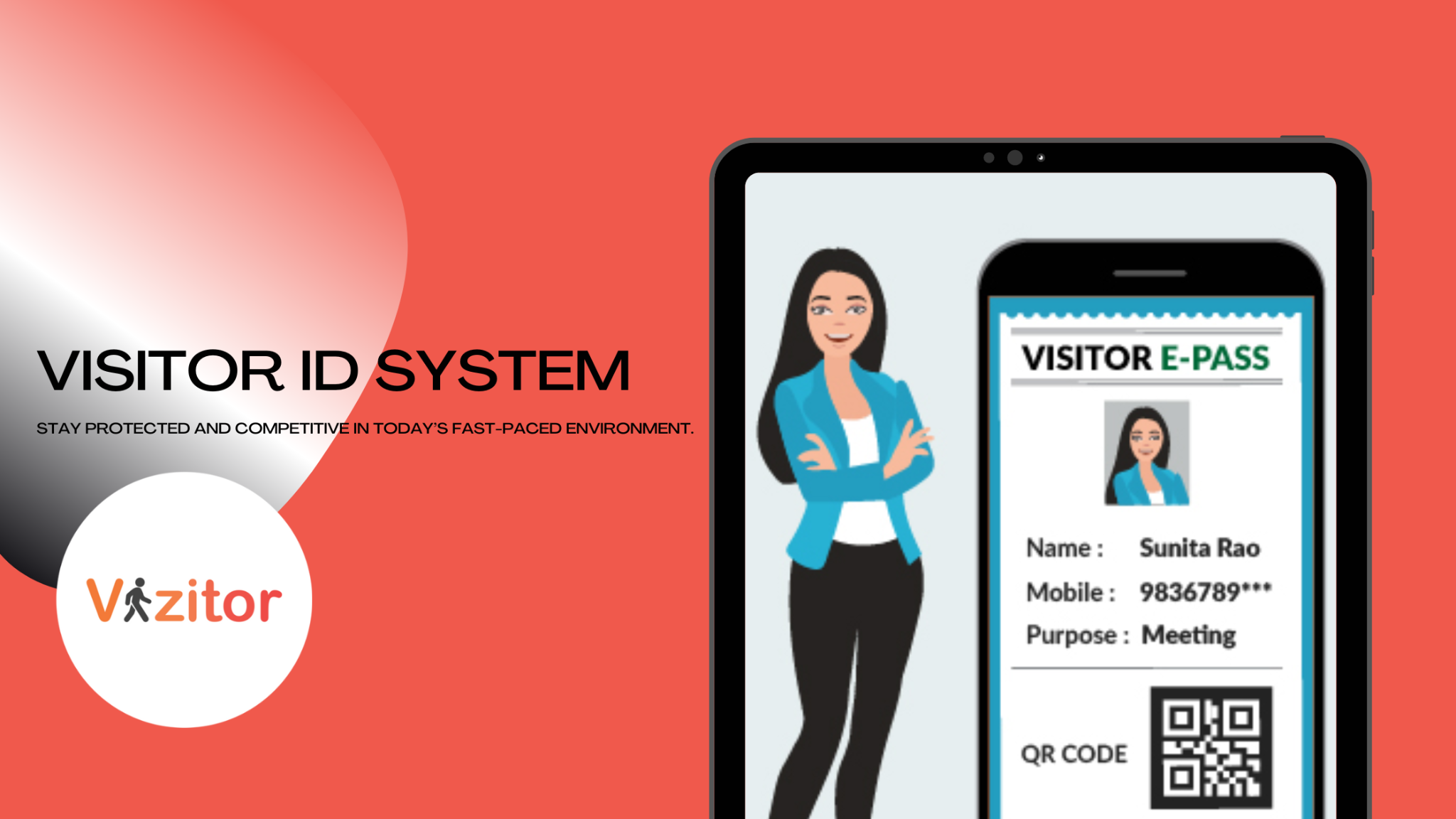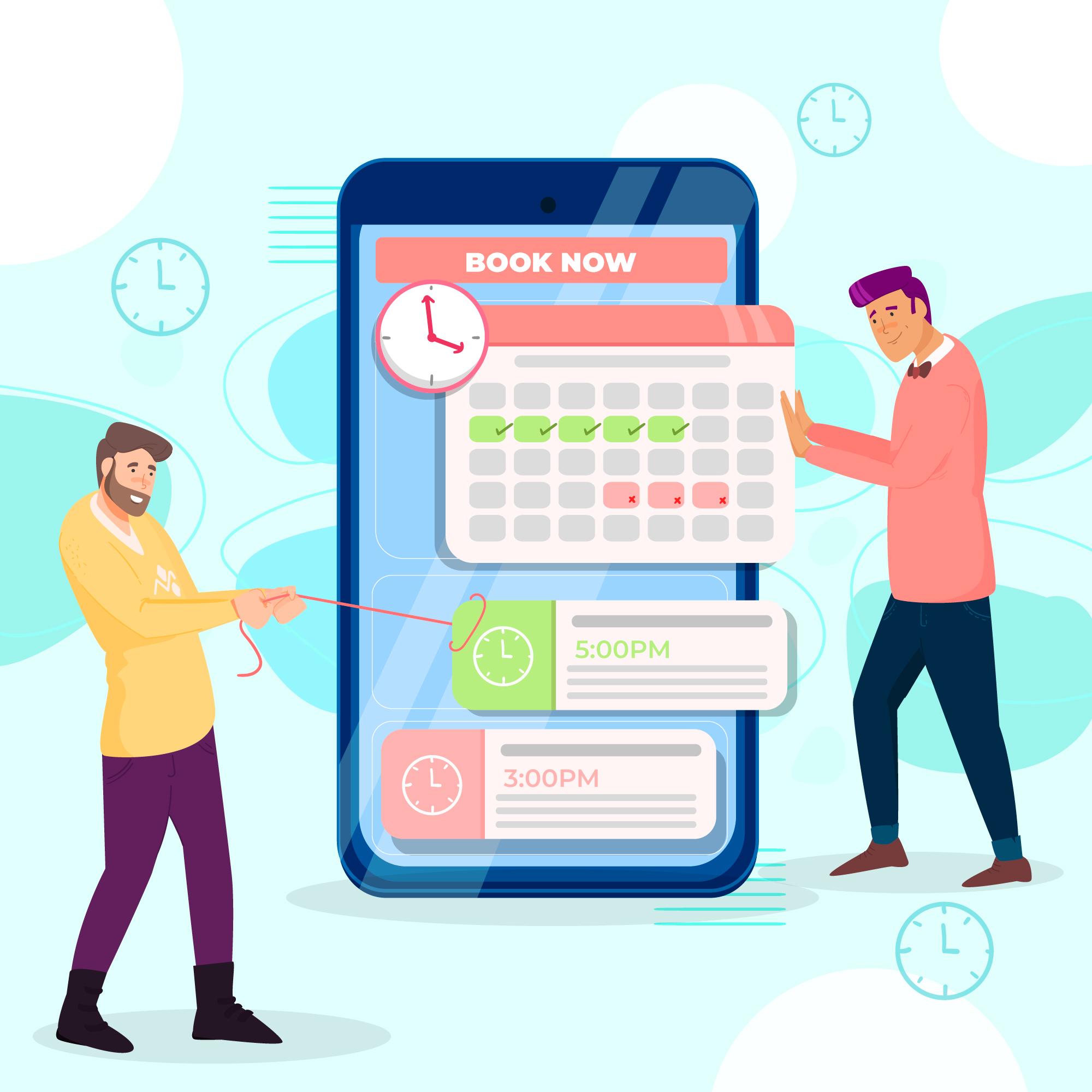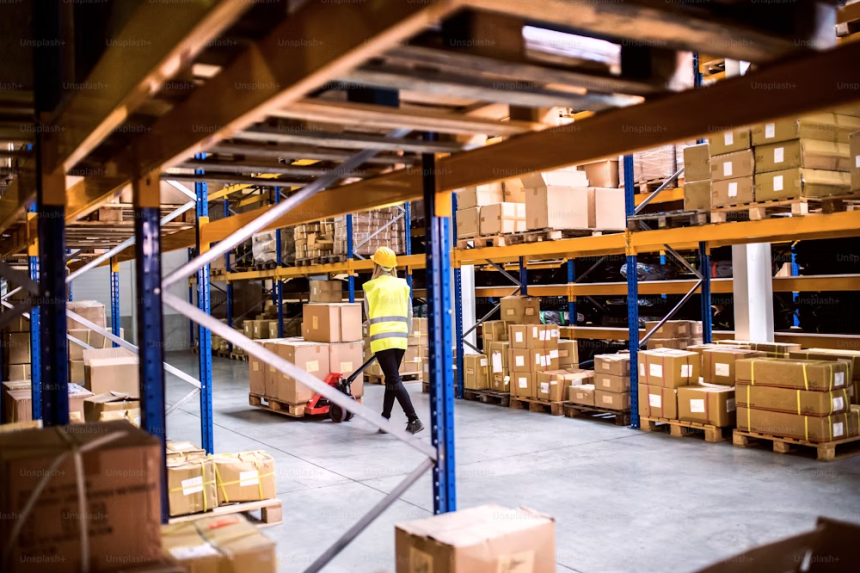Table of Content
Try Vizitor for Free!

Mon, Aug 26, 2024
Read in 14 minutes
Introduction
Did you know that over 60% of businesses with outdated visitor management systems face security breaches and operational inefficiencies? Sticking with old visitor systems might seem harmless, but it could be jeopardizing your business more than you realize.
Outdated visitor management systems can expose your company to significant risks. They often lack modern security features, leaving your data vulnerable to breaches. Inefficiencies in processing visitors can cause delays and disruptions, impacting overall productivity. Moreover, older systems may not integrate well with newer technologies, resulting in operational headaches and wasted resources.
Real-world cases highlight these dangers. Businesses have suffered from unauthorized access, data loss, and customer dissatisfaction due to outdated systems. In some cases, the fallout from these issues has led to severe financial losses and damaged reputations.
Updating to a modern visitor management system is not just a technological upgrade but a crucial step in safeguarding your business’s security and efficiency. Investing in a contemporary solution as a visitor ID system ensures you stay protected and competitive in today’s fast-paced environment.
The Shocking Truth About Manual Visitor Logs
Did you know that 50% of businesses using manual visitor logs face security breaches or operational disruptions? Relying on paper-based visitor logs might seem straightforward, but it comes with surprising downsides. These old-fashioned methods are not only cumbersome but also expose your business to significant risks.
Manual logs are prone to security flaws, as they can be easily manipulated or lost. Unauthorized changes or missing entries can compromise your company’s safety and compliance. Additionally, the operational inefficiencies of manual logs can’t be ignored. The process of recording visitor information by hand is not only slow but also prone to errors, leading to confusion and potential disruptions in your daily operations.
Let’s check out more.
1. Security Flaws
Manual visitor logs are highly vulnerable to manipulation and loss. Because entries are handwritten, it’s easy for unauthorized individuals to alter or forge information. Additionally, paper logs can be misplaced or destroyed, making it difficult to track who has accessed your premises.
2. Operational Inefficiencies
The process of manually recording visitor information is slow and prone to errors. Each entry must be written by hand, which can lead to mistakes and omissions. This not only wastes valuable time but also disrupts daily operations.
3. Data Accuracy Issues
Manual logs often suffer from inaccuracies due to human error. Incorrectly recorded data can lead to confusion and problems, such as misidentifying visitors or missing important details.
4. Time-Consuming Procedures
Handling paper logs requires frequent monitoring and updating, which can be time-consuming. This process diverts staff from more important tasks, reducing overall productivity.
5. Lost Opportunities for Integration
Manual logs cannot integrate with modern security systems or digital databases. This lack of integration means missed opportunities for enhancing workplace security and streamlining operations.
How Next-Gen Visitor ID Systems Outshine Their Competitors
Did you know that businesses using next-gen visitor ID systems report up to 40% fewer security incidents compared to those using older systems? Modern visitor ID systems are transforming how companies manage and secure their premises, making them a game-changer in the industry.
1. Cutting-Edge Features
Next-gen systems come with advanced features like facial recognition, which enhances security by ensuring that only authorized individuals gain access. Real-time alerts notify security personnel of any suspicious activity, while seamless integration with existing security infrastructure streamlines operations and improves overall efficiency.
2. Enhanced Security
Modern visitor ID systems offer superior security compared to legacy systems. With biometric verification and encrypted data storage, these systems protect against unauthorized access and data breaches, providing a higher level of security for your business.
3. Faster Check-Ins
One of the major advantages of new visitor ID systems is the speed of check-ins. Automated processes reduce wait times, allowing visitors to move through security quickly and efficiently, which improves the overall experience for everyone involved.
4. Better Data Management
Next-gen systems provide robust data management capabilities, allowing you to track and analyze visitor information easily. This leads to better reporting and insights, helping you make informed decisions about security and operational improvements.
5. Integration with Modern Technology
Unlike older systems, new visitor ID solutions integrate seamlessly with other digital tools and platforms, enhancing functionality and allowing for smoother operations across your business.
Adopting a next-gen visitor ID system can significantly boost your security, efficiency, and overall management, positioning your business at the forefront of modern technology.
The Cons Of Ignoring Next-Gen Technology
Did you know that 70% of companies that ignore next-gen technology fall behind their competitors within just two years? Failing to keep up with technological advancements can have serious consequences for your business, affecting everything from your competitive position to customer trust.
1. Competitive Disadvantage
Ignoring next-gen technology can put your business at a significant competitive disadvantage. While your competitors embrace innovations that streamline operations and enhance efficiency, you might find yourself struggling with outdated systems. This gap can lead to slower processes, increased costs, and a lack of features that modern customers expect. As a result, your competitors could attract more clients and gain a stronger market position simply by leveraging more advanced tools.
2. Customer Perception
Outdated technology can negatively impact your brand image and client trust. Customers today expect businesses to use the latest technology to ensure smooth, secure, and efficient interactions. If your systems are outdated, it may give the impression that your company is not innovative or reliable. This perception can erode customer confidence and lead to a loss of business, as clients may seek out competitors who offer a more modern and dependable experience.
3. Operational Inefficiencies
Ignoring technological advancements often means sticking with inefficient processes that waste time and resources. Old systems can be slow, error-prone, and difficult to integrate with newer technologies. This inefficiency can lead to increased operational costs and a decline in productivity, ultimately affecting your bottom line. Modern technology offers automation and streamlined workflows that can significantly improve your operations, making it essential to stay current.
4. Security Risks
Older technology can pose serious security risks. As cyber threats evolve, outdated systems may lack the necessary protections to safeguard your data. This vulnerability can lead to data breaches, loss of sensitive information, and legal complications. Next-gen technologies often come with advanced security features that protect against these risks and ensure your data remains safe.
5. Missed Opportunities for Growth
By not adopting the latest technology, you miss out on opportunities for business growth and innovation. Modern tools can provide valuable insights, enhance customer experiences, and open new avenues for expansion. Staying ahead with technology not only helps in maintaining operational efficiency but also drives innovation and growth.
Keeping up with next-gen technology is crucial for staying competitive, enhancing customer satisfaction, and safeguarding your business. Investing in modern solutions can help you avoid these pitfalls and position your company for long-term success.
Is a Visitor ID System Worth the Investment?
Did you know that businesses that invest in a visitor pass often see a return on investment (ROI) of up to 200% within three years? Deciding whether a visitor ID system is worth the investment involves weighing the initial costs against the long-term benefits. Here’s a look at the key factors to consider.
1. Cost vs. Long-Term Savings
The initial cost of implementing a visitor ID system can seem high, especially for small and medium-sized businesses. However, it’s important to consider the long-term savings. A modern system reduces the need for manual processes, which can cut down on labor costs and administrative overhead. Additionally, by minimizing errors and improving efficiency, you save valuable time and resources, leading to cost savings in the long run.
2. Potential ROI
Visitor ID systems offer substantial potential ROI. Beyond saving money on administrative tasks, they enhance security, reduce the risk of breaches, and improve visitor management. These improvements can prevent costly security incidents and operational disruptions. Many businesses find that the enhanced security and streamlined processes translate into financial benefits, making the investment worthwhile.
3. Scalability
A key advantage of investing in a visitor ID system is its scalability. As your business grows, a modern system can easily adapt to increased traffic and additional features. Unlike manual processes or outdated systems, which may become cumbersome and less effective over time, a scalable visitor ID system grows with your needs, offering a future-proof solution.
4. Expert Opinions
Industry leaders and tech experts often highlight the advantages of visitor ID systems. Experts note that while the upfront investment can be significant, the benefits of enhanced security, efficiency, and data management far outweigh the costs. They emphasize that businesses can gain a competitive edge by adopting advanced technology, as it not only improves operational processes but also boosts customer trust and satisfaction.
5. Real-World Success Stories
Many companies that have invested in visitor ID systems report significant improvements in their operations. For instance, businesses have seen reductions in check-in times, improved security measures, and better data management. These real-world success stories illustrate how the investment pays off through enhanced operational efficiency and security, ultimately benefiting the business.
How to Convince Stakeholders to Embrace Next-Gen Technology
Did you know that 65% of technology adoption failures are due to poor communication with stakeholders? Convincing stakeholders to embrace next-gen technology can be challenging, but with the right strategies, you can effectively advocate for a new system. Here’s how to approach the task:
1. Highlight the Benefits
Start by clearly outlining the benefits of the new technology. Focus on how it can solve current problems, improve efficiency, and offer a competitive edge. Use concrete data and case studies to demonstrate the potential return on investment (ROI). Show how the technology will streamline processes, enhance security, and ultimately lead to cost savings and growth for the company.
2. Address Concerns
Anticipate and address any concerns stakeholders might have. Common worries include the cost of implementation, the learning curve for staff, and potential disruptions during the transition. Provide detailed plans for training, support, and a phased rollout to ease these concerns. Be transparent about costs and offer comparisons with the expenses of maintaining outdated systems.
3. Present Success Stories
Share success stories from other businesses that have adopted the technology. Highlight examples where the transition led to significant improvements in operations, customer satisfaction, and financial performance. Real-world success stories can be powerful tools to illustrate the practical benefits and reassure stakeholders of the technology’s effectiveness.
4. Use Visual Aids
Effective presentations can make a big difference. Use visual aids like charts, graphs, and videos to illustrate the technology’s benefits and how it works. Visuals can help make complex information more accessible and engaging, making it easier for stakeholders to grasp the advantages of the new system.
5. Develop a Strategic Plan
Create a clear, strategic plan for the implementation of the new technology. Outline the steps involved, the timeline, and the resources required. Include a risk management plan to address potential issues and demonstrate how you will handle challenges. A well-thought-out plan can build confidence among stakeholders and show that you’ve considered the implications thoroughly.
6. Provide a Cost-Benefit Analysis
Offer a detailed cost-benefit analysis to show how the long-term gains outweigh the initial investment. Include projected savings, efficiency improvements, and potential revenue growth. This analysis can help stakeholders understand the financial value of the investment and how it aligns with the company’s strategic goals.
By presenting a compelling case with clear benefits, addressing concerns, showcasing success stories, and providing a strategic plan, you can effectively convince stakeholders to embrace next-gen technology and drive positive change within your organization.
The Future of Visitor Management
As businesses continue to evolve, so do the technologies that support them. The future of visitor management is increasingly focused on adopting next-gen visitor ID systems, which offer a range of benefits crucial for modern operations. Here’s why upgrading to a next-gen system is essential for staying ahead in today’s fast-paced environment.
Investing in a next-gen visitor ID system is a step toward future-proofing your business. By adopting cutting-edge technology, you position yourself ahead of competitors and prepare your organization for continued growth and innovation.
If your current visitor management system is outdated, now is the time to assess its effectiveness and consider an upgrade. Evaluate your needs, explore modern solutions, and invest in a system that will enhance security, efficiency, and data management. Upgrading to a next-gen visitor ID system is a smart move that will benefit your business in the long run, ensuring you stay competitive and secure in the future.
Why Choose Vizitor?
Did you know that businesses using Vizitor report up to a 50% improvement in check-in efficiency and security compared to traditional systems? Vizitor’s advanced visitor management solutions have proven their value across various industries. Here’s how Vizitor has made a difference for notable companies like Hard Rock Cafe, Snapdeal, and Retina Centre.
Hard Rock Cafe
Hard Rock Cafe, with 175 locations around the globe, faced challenges in managing high volumes of visitors efficiently and securely. Vizitor’s advanced visitor management system streamlined its check-in process across all locations. By implementing Vizitor, Hard Rock Cafe significantly reduced wait times, enhanced security with biometric verification, and improved data accuracy. This upgrade not only enhanced the visitor experience but also allowed the staff to focus on providing exceptional service.
Snapdeal
Snapdeal, a major online retailer, needed a robust solution to handle the influx of visitors at their corporate offices. Vizitor provided a seamless check-in experience with real-time alerts and integrated data management. The system’s efficiency helped Snapdeal maintain high-security standards while managing visitor flows effortlessly. The improved process also allowed Snapdeal to better track and analyze visitor patterns, leading to enhanced operational insights and better security protocols.
Retina Centre
Retina Centre, a healthcare facility, required a visitor management system that could handle sensitive patient information securely. Vizitor’s solution offered advanced security features and a user-friendly interface, which was crucial for maintaining patient confidentiality and streamlining the check-in process. By adopting Vizitor, the Retina Centre achieved better visitor tracking, reduced administrative burdens, and enhanced overall security, ensuring a smooth experience for patients and staff alike.
Benefits of Choosing Vizitor
-
Enhanced Security: Vizitor’s state-of-the-art features like facial recognition and real-time alerts ensure a high level of security, protecting your premises from unauthorized access.
-
Improved Efficiency: The system automates and streamlines the check-in process, reducing wait times and minimizing errors, which boosts overall operational efficiency.
-
Comprehensive Data Management: Vizitor provides robust tools for tracking and analyzing visitor data, offering valuable insights and improving decision-making.
-
Seamless Integration: The system integrates effortlessly with existing security infrastructure and digital tools, providing a cohesive and effective solution.
-
User-Friendly Experience: With an intuitive interface, Vizitor is easy to use for both staff and visitors, ensuring a smooth and efficient experience.
Choosing Vizitor means investing in a solution that enhances security, improves efficiency, and offers valuable insights, as demonstrated by successful implementations at Hard Rock Cafe, Snapdeal, and Retina Centre.
Frequently Asked Questions
1. What is a visitor ID system?
A visitor ID system is a technology solution designed to manage and track visitors to a facility. It typically includes features such as check-in/check-out processes, visitor identification, and security measures to ensure authorized access and efficient visitor management.
2. How does a visitor ID system work?
Visitor ID systems streamline the check-in process by capturing visitor information, issuing identification badges, and recording entry and exit times. Advanced systems may include features like facial recognition, barcode scanning, and integration with existing security infrastructure.
3. What are the benefits of using a visitor ID system?
Using a visitor ID system provides several benefits, including enhanced security, improved efficiency in visitor management, real-time tracking and reporting, reduced administrative burden, and a professional image for your organization.
4. How secure are visitor ID systems?
Visitor ID systems are designed with security in mind. Features like biometric verification, encrypted data storage, and real-time alerts help ensure that only authorized individuals gain access to your premises and that visitor data is protected.
5. Can Vizitor handle a high volume of visitors?
Yes, Vizitor is equipped to manage high volumes of visitors efficiently. The system’s automated processes and advanced features ensure quick check-ins and smooth operations, even in busy environments like corporate offices or large events.
6. How does Vizitor integrate with other systems?
Vizitor integrates seamlessly with existing security systems, digital tools, and IT infrastructure. This integration allows for a cohesive visitor management solution that enhances overall efficiency and effectiveness.
7. What kind of support does Vizitor offer?
Vizitor provides comprehensive customer support, including setup assistance, training, and ongoing technical support. Their team is available to help with any questions or issues you may encounter, ensuring that your system operates smoothly.
8. Is Vizitor scalable for growing businesses?
Yes, Vizitor is designed to be scalable, accommodating the needs of both small businesses and large enterprises. As your business grows, Vizitor can adapt to increased visitor volumes and additional features, making it a future-proof solution.
9. What kind of reporting and analytics does Vizitor offer?
Vizitor provides robust reporting and analytics tools, allowing you to track and analyze visitor data. This includes detailed reports on visitor patterns, security incidents, and check-in efficiency, helping you make informed decisions and improve your operations.
10. How does Vizitor ensure data privacy?
Vizitor prioritizes data privacy with encrypted data storage and secure access controls. The system is designed to protect sensitive information and ensure that visitor data is handled in compliance with privacy regulations.









